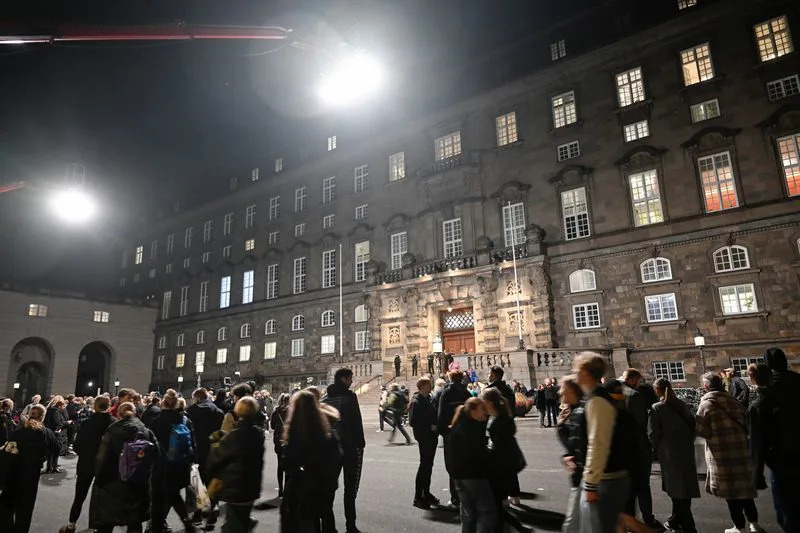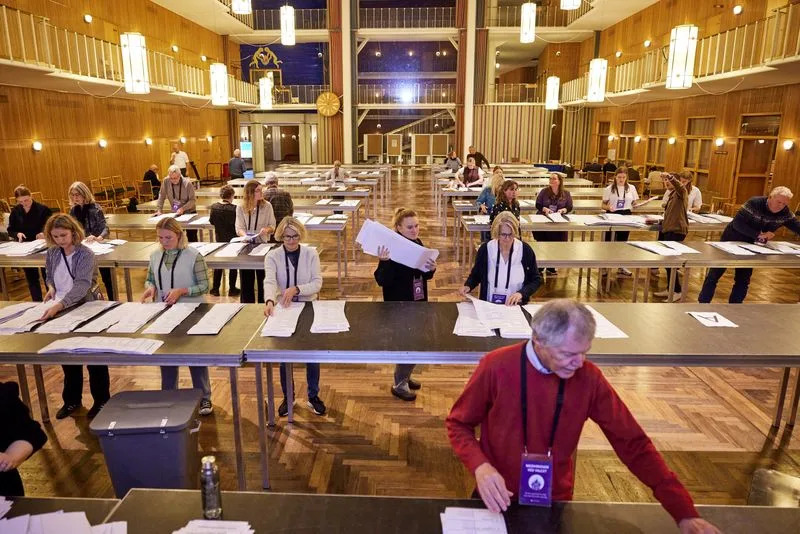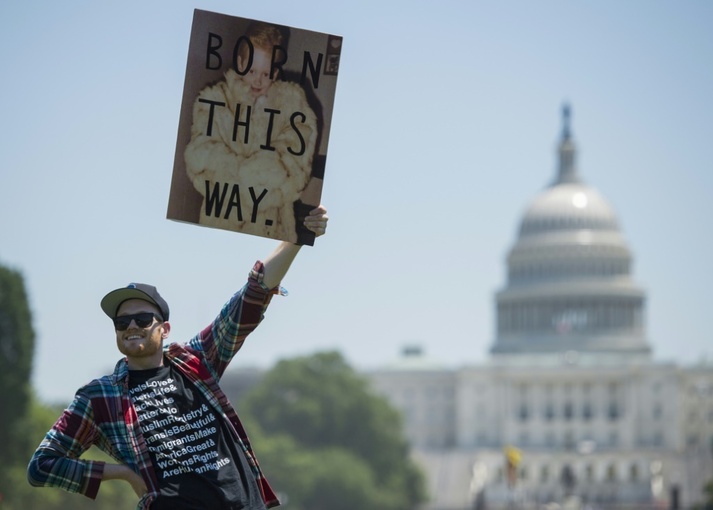The “Malady” of Impressionism: How Claims of Disability Haunted the Modernist Movement
By Elizabeth Guffey
October 28, 2022
 Claude Monet: Impression, Sunrise, 1872, oil on canvas, 18¾ by 24¾ inches.COURTESY MARMOTTAN MUSEUM OF MONET, PARIS
Claude Monet: Impression, Sunrise, 1872, oil on canvas, 18¾ by 24¾ inches.COURTESY MARMOTTAN MUSEUM OF MONET, PARIS
In 1914, the Austrian actress Tilla Durieux was driven from Berlin to Paris some 15 times to sit for a portrait by Pierre-Auguste Renoir. In the resulting painting, Durieux looks serenely grave, fixing her gaze somewhere outside its shimmer of rose and honeyed tones. Writing years later, she described the severely arthritic artist. As he was wheeled into the room by a nurse, Durieux was “flabbergasted” by Renoir’s hands. His right, she noted, had been frozen by the arthritis in the gesture of holding a paintbrush; the left was contorted in such a way that it perfectly held a palette.
A contemporary photograph confirms her account. Seemingly small and hunched, Renoir sits in his wheelchair, tightly grasping a paint brush in a twisted, clenched fist. The artist’s friend Albert André revealed that visitors watching Renoir paint would insist that his brush was actually attached to his fingers. Renoir’s son Jean, who later became an acclaimed film director, poignantly described, in his 1962 biography, Renoir, My Father, how people reacted when they encountered the elderly artist. Most were confounded. “It isn’t possible!” they would exclaim. “With hands like that, how can he paint those pictures? There’s some mystery somewhere.”
“Monet had cataracts.” “Degas went blind.” “Renoir was paralyzed.” Indeed, the history of Impressionism is often told as a history of impairment hiding in plain sight. But each time such legends are repeated without carefully considering how disability and ableism shaped both Impressionist art and its reception, we miss the opportunity to place Impressionism within a broader critique of the idea of normalcy itself.

PHOTO 12/UNIVERSAL IMAGES GROUP VIA GETTY IMAGES
The best-known discussion of Impressionist disability comes not from memoirs, analysis of photographs, or accounts of sitters like Durieux, but instead from 19th-century art reviews. In a critique that began some 40 years before Renoir painted Durieux, detractors savaged Monet, Degas, Renoir, and the other artists who sent work to the 1874 Société Anonyme cooperative show, known today as the First Impressionist Exhibition, repeatedly using ableist language to mock or satirize Impressionist painting as the product of impairment. Rather than merely characterizing these paintings as rough, unfinished, or audacious, for example, some of the most influential critics of the time likened the Impressionists’ subversion of social and artistic norms to a form of illness or even madness. Surveying scenes like the sun-drenched boats bobbing on the glittering Seine in Monet’s Pont Argenteuil (1874) at the Second Impressionist Exhibition, in 1876, a writer for the conservative newspaper L’Écho Universel praised “the brilliance of daylight, the purity of atmosphere, and the blue of water and sky.” What a dazzling landscapist Monet might be if only he could be cured of the “sickness of Impressionism.”

Renoir: Tilla Durieux, 1914, oil on canvas, 36¼ by 29 inches.
COURTESY METROPOLITAN MUSEUM OF ART, NEW YORK
Although art is a nonmedical domain, critics described Impressionism over and over in medical terms. Sometimes this critique included simple exhortations, such as the demand of a writer from L’Événement: “Put on glasses, gentlemen impressionists…!” But more often, discussions of visual acuity also announced an enforced normalcy. Given that Impressionism is a movement now associated with keen visual observation, it is curious to find a critic for L’Univers Illustré insisting that the Impressionists had “strangely made eyes.” A writer for Le Soleil suggested that the Impressionists’ problems lay more within “the domain of medical causality than that of art criticism.” Often enough these critiques included actual diagnoses, ranging from simple “color-blindness” to “myopia” to blinding forms of “ophthalmalgia.”
Paralleling this medicalization of the Impressionists’ vision, their art was often described, as the critic for Paris-Journal put it, as the outward expression of “diseased brains.” At the 1874 exhibition, La Presse identified Edgar Degas’s The Ballet Class (1874) as one of several works on view that showed signs of “mental derangement,” evident in its lack of careful modeling and unconventional use of color, “negating” the most basic rules of drawing and painting. Some reviewers dismissed the Impressionists by calling them “crazies,” “lunatics,” and “Bedlamites.” Others recommended specific asylums or gave referrals to psychologists who treated well-heeled but deluded patients.

Edgar Degas: The Dance Class, 1973–76, oil on canvas, 34¾ by 29½ inches.
COURTESY MUSÉE D’ORSAY, PARIS
Although generally supportive of Impressionist art, the writer and critic Joris-Karl Huysmans took issue, in his 1881 volume Modern Art, with their reliance on the color blue. Known for his subversive wit, Huysmans built on his own genuine concern, suggesting that the overuse of this color might be associated with a form of hysteria then being studied by the French neurologist Jean-Martin Charcot at the Salpêtrière hospital in Paris. Satirically equating colorblindness with other “diseases of the nervous system,” Huysmans associated Impressionist art with a kind of “monomania” of the eye.
While Huysmans ultimately assured readers that the best Impressionist painters had been “cured” of this sickness, other critics suggested that Impressionist painting was not only the product of disability but also disabling. Simply viewing these paintings, they wrote, could cause impairments ranging from simple cases of “seasickness” to “vertigo” and even “seizures” or “strokes.” As if deploying a secret weapon, one 1881 cartoon in the satirical magazine Le Charivari proposed sending batteries of Impressionist paintings to Tunisia to inflict bodily harm on insurgents. Another 1877 Le Charivari cartoon suggested that pregnant women be cautioned against entering an Impressionist exhibition lest they miscarry.
Those insisting that Impressionist art was a form of madness warned that it might be catching. The critic Louis Leroy’s infamous satirical review of the 1874 exhibition, in which he derisively referred to the artists as “Impressionists,” after Monet’s painting Impression, Sunrise (1872), takes the form of a fictionalized dialogue between the younger critic and an elderly academic artist as they walk through the show. Confronted with the first paintings, the older man is “shocked” by Renoir’s Dancer (1874), finding its color weak and its form insubstantial. As the pair continue through the exhibition, however, the satire becomes darker: Monet’s Boulevard des Capucines (1873) raises the elderly artist’s blood pressure and he fears an impending stroke. By the time he views Cézanne’s House of the Hanged Man (1873), the older painter cries out, then sinks into complete delirium.

A cartoon published in the April 18, 1877, issue of Le Charivari, showing a pregnant woman being discouraged from entering an Impressionist exhibition.
COURTESY GALLICA, BIBLIOTHÈQUE NATIONALE DE FRANCE
Two years later, a critic for L’Écho Universel went even further, suggesting that “yesterday some sad sack who had just left the exhibition was arrested on Rue Le Peletier for biting passers-by,” as if the paintings had turned him into a rabid dog. The implication was clear: emerging from damaged bodies and minds, Impressionism could in turn weaken or even wreck normal, healthy ones.
AS POPULAR OPINION about Impressionist art shifted, this earlier critique was dismissed as naive and misguided. But the legacy of such ableist criticism presents a point of unresolved tension in our understanding of Impressionist painting. Because the rhetoric of disability and illness was initially used to attack the Impressionist painters, contemporary audiences often assume that it is inherently insulting and misguided to discuss them in such terms today.
Yet at various points in their lives, most of the major Impressionists did work with and through a range of embodiments and forms of ability, a fact that tends to be acknowledged only indirectly, giving their impairments an air of myth or mystery. Instead of recoiling from discussions of Impressionist maladies as imprudent and wrong-headed vestiges of 19th-century critical commentary, the task is to address the role of disability in Impressionist art in a more nuanced way.
Degas’s changing vision, for example, is common knowledge, but the nature of his “blindness” is still little understood. In the 1988 essay “Degas and the Contingency of Vision,” art historian Richard Kendall—among the few scholars to seriously consider Impressionist disability—notes that the artist’s biographers have created “a number of myths and stratagems” to account for the apparent paradox of Degas’s visual impairment. Distorting the evidence, they tend to divide his career into “a healthy, visually unimpaired youth and maturity, followed by a late, chronic phase of blindness” that caused him to give up oil painting in favor of sculpture. In reality, the artist experienced vision impairment throughout much of his adult life, and certainly before he began exhibiting with the Impressionists.

Edgar Degas, date unknown.
UNIVERSAL IMAGES GROUP VIA GETTY IMAGES
Degas was consulting eye doctors and using glasses by the early 1870s. In 1874, the very week before the First Impressionist Exhibition opened, Degas complained in a letter that he was too busy to follow the orders of his oculist, who demanded he rest. Indeed, when the diarist and critic Edmond de Goncourt visited Degas’s studio several months earlier, he observed “an original fellow this Degas, inclined to be sickly, neurotic, and ophthalmic to the point … [that he is] concerned with his eyes [and] fears he will lose his eyesight.”
Degas’s disability forces a series of questions, less about his vision than about the ways it has been noted, both in his lifetime and to this day. It asks us to reconcile the visually innovative work of Degas’s earlier career with bodily or mental signs of difference. Salon criticism accusing Degas of “mental derangement” can be easily dismissed. But, arguably, critics simply used the vocabulary of “madness” to express those qualities they considered difficult or amiss, such as the exaggerated perspective and unexpected cropping in works like The Rehearsal of the Ballet Onstage (ca. 1874) and Carriage at the Races (ca. 1870). Today, Degas and his peers are celebrated for breaking away from the conventions of the academy and the salon, but it is rarely acknowledged that bodily difference might, as critics of the time suggested, have played a role in such breaks from “normalcy.”
While museums and art journals have tended to neglect Impressionist disability, it is the subject of a growing subgenre of medical literature. Cobbling together letters, diaries, and artifacts, all the while applying present-day clinical experience, physicians such as the late eye surgeon and author Patrick Trevor-Roper and ophthalmologist Michael Marmor have often read Impressionist art as a visual record that enables us to make posthumous diagnoses. Marmor even uses computer simulations to demonstrate Degas’s changing visual acuity, effectively inviting us to embody the artist and channel his vision. The aging Degas experienced progressive retinal disease, Marmor tells us, and his works became more blurred and “coarse.” As this happened, “his hazy view smoothed out irregularities so that he would accept work that appears jarring to viewers with normal acuity.”
But, finding that his own sight did not parallel the refined and relatively narrow standards that defined the norms of academic art, might Degas have begun questioning the conventions that dictated his mainstream contemporaries’ work? Indeed, after his studio visit, Goncourt later reflected on this in his journal, positing that the artist’s vision troubles might not be such a burden. Noting Degas’s consternation with his changing eyesight, Goncourt added that difficulties with his vision may have made the artist become “an extraordinarily sensitive person who is aware of the contradictory character of things.”
Changing vision may have similarly allowed Monet to appreciate the visual contradictions in the world around him. Much like Degas, Monet began complaining of vision changes in his mid-20s, almost a decade before he first exhibited with the Impressionists. Reporting a visit to the doctor in 1867, a dismayed Monet told the painter Frédéric Bazille that he had been advised to stop working outdoors. But only when Monet developed cataracts after the turn of the century—he was officially diagnosed in 1912, following years of significant vision changes—did his deliberately imprecise art become the stuff of legend.

MONET
UNDERWOOD & UNDERWOOD/LIBRARY OF CONGRESS/CORBIS/VCG VIA GETTY IMAGES
These accounts impact our understanding of the last great work of Monet’s career, the tranquil “Nymphéas” series (Water Lilies, 1897–1926), eight of which were permanently installed at the Musée de l’Orangerie in Paris in 1927. While Monet worked intermittently on what he called these grandes décorations, hoping to offer a “meditative asylum at the center of a flowery aquarium,” his critics saw them differently when the Orangerie cycle was publicly unveiled not long after his death. After their installation, even friendly writers like Louis Gillet worried about the work of a “painter without vision” whose eyes were “ruined.” Decades later, in 1957, the critic Lawrence Alloway complained in the BBC’s weekly magazine The Listener that, as Monet’s art was falling out of fashion, contemporaries increasingly treated him as a kind of “Mr. Magoo at Giverny—a flawed eye.”
Contemporary doctors have echoed this appraisal. In his 1970 book The World Through Blunted Sight, Trevor-Roper quickly assessed the blurred and mottled colors of Monet’s water lilies, seeing in them the “characteristic changes” of double or bilateral cataracts. More recently, Marmor went further, noting how Monet’s sense of color shifted for a period after 1914–17, as the artist began incorporating more reds and browns, while also softening the edges of objects. According to Marmor, this changed again after Monet’s cataract surgery in 1923. Medical positivism often envelops these posthumous diagnoses, with the artist’s physical and mental condition discussed as if he were a living patient referred for treatment. Specialists today suggest that Monet’s doctors were out of their league. Having examined Monet’s eyeglasses, ophthalmologist James Ravin suggests that modern intraocular lenses or contacts might have “overcome” Monet’s vision “deficits.”

Monet: Le Pont d’Argenteuil, 1874, oil on canvas, 23¾ by 31½ inches.
COURTESY MUSÉE D’ORSAY
The reductivism of such diagnostic accounts—for instance, the notion that cataracts were the key to Monet’s “blurry style” rather than any other historical, formal, or psychological influences—suggests one reason why art experts are uncomfortable with discussions of Impressionist disability. In their emphasis on “normalcy” and the Impressionists’ departure from it, such medicalized readings recall the early critical accusations of “blindness” or “madness” first levied at these artists more than a century earlier. Indeed, just as Salon critics were on the lookout for deviations from normative academic practice, these posthumous diagnoses are preoccupied with establishing individual artists’ bodily deviance from medical standards, rather than acknowledging the generative role that their disabilities may have played in the development of Impressionist art. The Impressionists not only rejected older styles of art and developed innovative ways of painting, they also responded to their own changing physical circumstances. Monet struggled with the changes that cataracts made in his vision, complaining to his dealer friends the Bernheim brothers in 1922 that “my poor eyesight makes me see everything in a complete fog.” But, he added, “it’s very beautiful all the same, and it’s this which I’d love to have been able to convey.”
This article appears under the title “The ‘Malady’ of Impressionism” in the October 2022 issue, pp. 68–75.





















 Val H. and Sky Cubacub modeling swimwear for Rebirth Garments.PHOTO COLECTIVO MULTIPOLAR
Val H. and Sky Cubacub modeling swimwear for Rebirth Garments.PHOTO COLECTIVO MULTIPOLAR




 Claude Monet: Impression, Sunrise, 1872, oil on canvas, 18¾ by 24¾ inches.COURTESY MARMOTTAN MUSEUM OF MONET, PARIS
Claude Monet: Impression, Sunrise, 1872, oil on canvas, 18¾ by 24¾ inches.COURTESY MARMOTTAN MUSEUM OF MONET, PARIS








